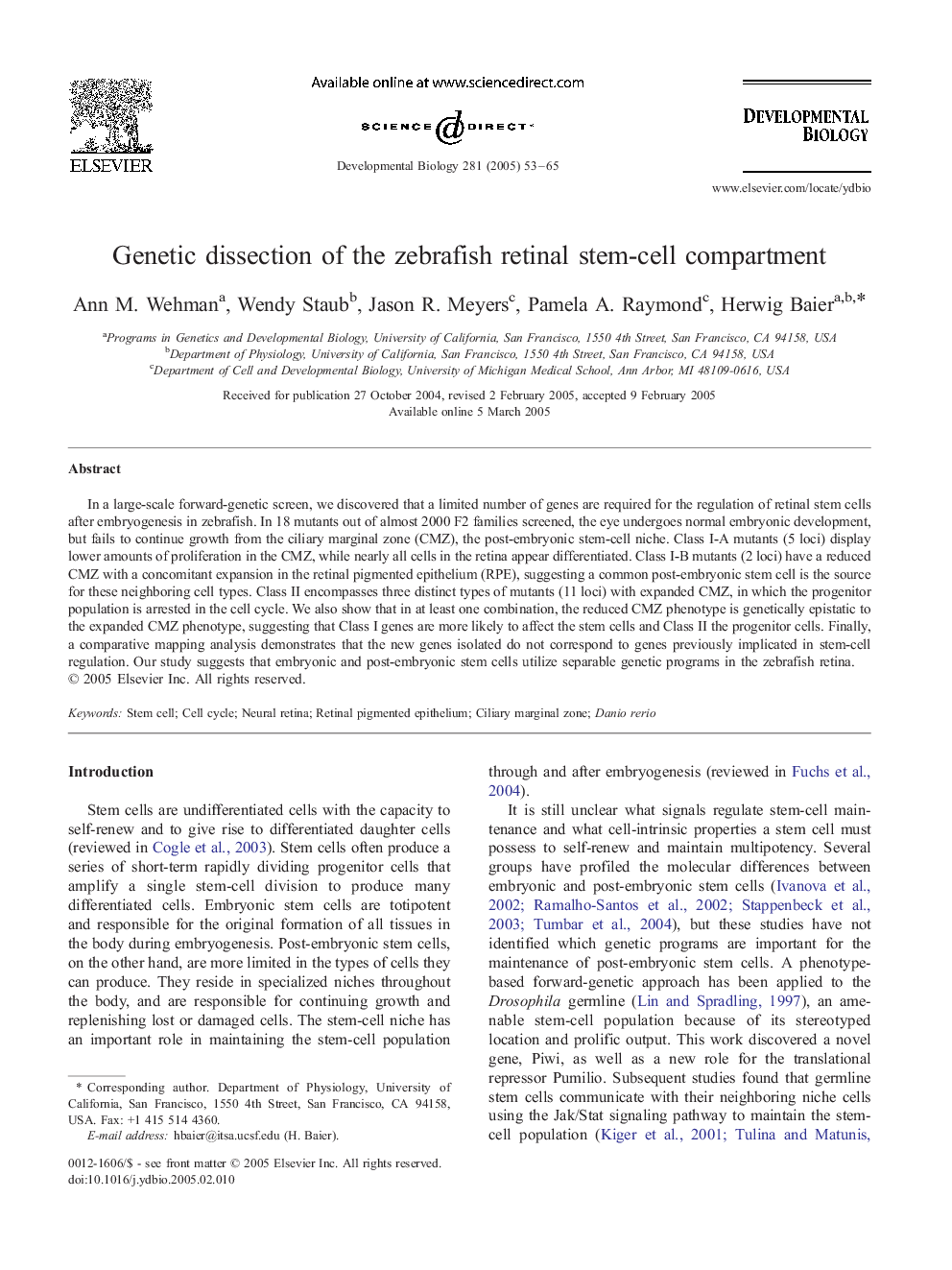| Article ID | Journal | Published Year | Pages | File Type |
|---|---|---|---|---|
| 10934215 | Developmental Biology | 2005 | 13 Pages |
Abstract
In a large-scale forward-genetic screen, we discovered that a limited number of genes are required for the regulation of retinal stem cells after embryogenesis in zebrafish. In 18 mutants out of almost 2000 F2 families screened, the eye undergoes normal embryonic development, but fails to continue growth from the ciliary marginal zone (CMZ), the post-embryonic stem-cell niche. Class I-A mutants (5 loci) display lower amounts of proliferation in the CMZ, while nearly all cells in the retina appear differentiated. Class I-B mutants (2 loci) have a reduced CMZ with a concomitant expansion in the retinal pigmented epithelium (RPE), suggesting a common post-embryonic stem cell is the source for these neighboring cell types. Class II encompasses three distinct types of mutants (11 loci) with expanded CMZ, in which the progenitor population is arrested in the cell cycle. We also show that in at least one combination, the reduced CMZ phenotype is genetically epistatic to the expanded CMZ phenotype, suggesting that Class I genes are more likely to affect the stem cells and Class II the progenitor cells. Finally, a comparative mapping analysis demonstrates that the new genes isolated do not correspond to genes previously implicated in stem-cell regulation. Our study suggests that embryonic and post-embryonic stem cells utilize separable genetic programs in the zebrafish retina.
Keywords
Related Topics
Life Sciences
Biochemistry, Genetics and Molecular Biology
Cell Biology
Authors
Ann M. Wehman, Wendy Staub, Jason R. Meyers, Pamela A. Raymond, Herwig Baier,
